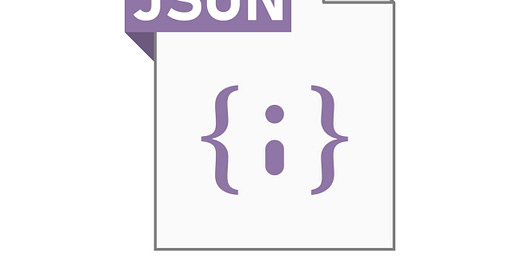A Simple Guide to Understanding JSON
JSON data is structured using two basic elements: objects and arrays.
In the world of data exchange and web development, JSON (JavaScript Object Notation) plays a pivotal role. Don't let the acronym intimidate you; JSON is actually quite straightforward once you break it down. In this article, I'll unravel the mystery of JSON in simple, easy-to-understand language.
What is JSON?
JSON is a lightweight data interchange format that's easy for both humans and machines to read and write. It's not tied to any specific programming language, making it a universal choice for data representation.
JSON data is structured using two basic elements: objects and arrays.
Objects are enclosed in curly braces `{}`, and they consist of key-value pairs. A key is a string that acts as a label for the associated value, which can be a string, number, object, array, boolean, or null.
{
"name": "John",
"age": 30,
"isStudent": false
}
In this example, we have an object with three key-value pairs.
Arrays are ordered lists enclosed in square brackets `[]`. Each item in an array can be of any JSON data type, including objects and arrays themselves.
[
"apple",
"banana",
"cherry"
]
Here, we have an array of fruits.
How JSON Works
JSON is a text-based format, which means it's primarily used for data transmission and storage. When data is transmitted from one system to another, it's typically in JSON format. When received, the JSON data is parsed (interpreted) to extract the information and use it within the program.
Why Use JSON?
JSON has become the de facto standard for data exchange on the web for several reasons: readability, compatibility, lightweight and interoperability.
Readability
JSON is easy to read for both humans and machines due to its simple syntax.Compatibility
It can be used with virtually any programming language, making it highly versatile.Lightweight
JSON data is compact, which reduces the amount of data transferred over networks.Interoperability
JSON is widely supported by web APIs, databases, and various data sources.
JSON is used in various applications and scenarios, including: Web APIs, Configuration Files and Data Storage.
JSON may seem complex at first glance, but it's an incredibly simple and effective way to represent data. With objects and arrays, you can structure information in a way that's easy to understand and work with. JSON's versatility and ease of use have made it an essential tool in modern web development and data exchange, making it a valuable skill for any programmer or developer to learn. So, don't be intimidated by JSON—embrace it as a powerful tool for handling data in your projects.



